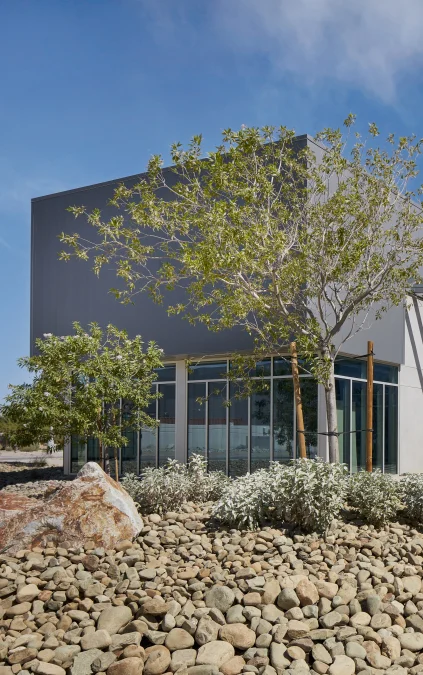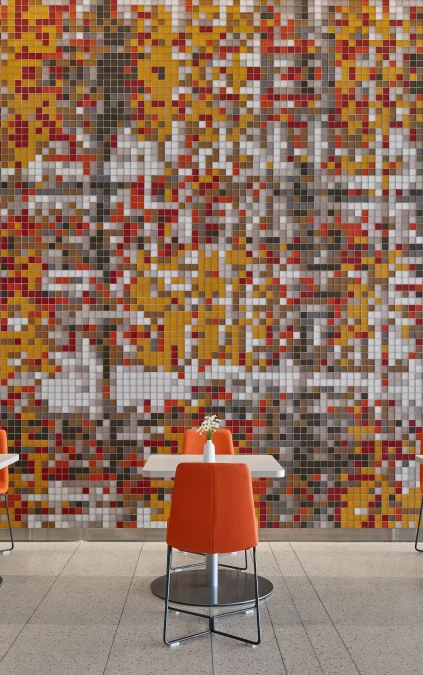
Balancing High Performance and Student-Athlete Well-being
In today’s competitive academic landscape, student success extends far beyond the classroom. Institutions continue to embrace a holistic approach to education that recognizes the vital connection between mind, body, and soul.
At the intersection of education, health, and wellness, campus facilities are evolving to either create or enhance environments that support academic achievement, physical health, and mental well-being.
Nowhere is this more evident than in the design of campus sports and recreation facilities, where our integrated team prioritizes creating spaces that foster athlete performance, academic success, and a sense of community. Ultimately, addressing all three drives overall well-being.
Shaping Athlete Wellness & the Student Experience
Wellness is a multifaceted pursuit, especially for student-athletes who must balance academic pressures and athletic commitments. Time management is a critical factor. EwingCole’s approach to sports facility design considers the individual student-athlete’s daily experience and focuses on creating efficiency by consolidating individual sports program training facilities to reduce wasted travel time.
Take the Gary and Barbara Rodkin Academic Success Center at Rutgers University, for example. This centrally located facility blends academic support with athletic development, providing student-athletes with spaces encouraging focus, learning, and personal growth. By integrating study areas with proximity to training and wellness spaces, the center is designed to promote high performance and overall well-being.
EwingCole enhanced a diversity of spaces to accommodate a variety of learning styles. An expansive lounge area fosters peer-to-peer learning among student-athletes from all sports. The elegant fireside common area along the corridor to the multi-purpose room provides a living room-style lounge and study space. Wooden walls, housing framed black and white photos of former Rutgers athletes, and a modern fireplace create a sense of calm and comfort to relax and study. Students can also access a lively, café-style, fully outfitted nutrition bar for a quick bite between training sessions.
Equally significant to overall health and wellness is the evolution of locker room design. Modern locker rooms, like those in the Coulson Family Training Complex at the University of Pennsylvania, are tailored to create a sense of community and belonging. These spaces are designed for connection and support, allowing student-athletes to decompress and bond with teammates.
The new locker room is located directly adjacent to the historic Franklin Field with new direct access to existing training facilities, and new team meeting rooms, nutrition area, and position meeting rooms – allowing an efficient flow for student-athletes. This elevated facility improves athlete experience, attracts recruits, and fosters team pride.
When campuses invest in spaces prioritizing health and wellness, the benefits extend beyond athletes to the entire student body. Facilities that promote physical fitness, mental resilience, and social connection contribute to a healthier, more engaged campus community.
Designing for Peak Performance and Recovery
Recovery spaces are becoming more advanced and personalized, incorporating the latest in sports science to help student-athletes manage stress, prevent injury, and optimize performance. From state-of-the-art locker rooms to advanced recovery zones, thoughtful design elevates the athlete experience.
For example, the Hale Center at Rutgers represents the future of athlete-focused design. Here, game-day locker rooms are crafted to encourage camaraderie and focus, with materials and layouts that create an energizing atmosphere. The new players’ lounge, complete with televisions and arcade games, a golf simulator, a pool table, and a foosball table, creates a dynamic gathering space for the team, and the new nutrition center provides a refueling station where players can find shakes and snacks curated for their unique performance goals.
The state-of-the-art recovery suite promotes healing and wellness with sensory deprivation therapy, infrared saunas, dry float therapy, electric cryotherapy, and a vibroacoustic therapy suite. Recovery zones equipped with hydrotherapy pools, massage areas, sports psychologists, and quiet rooms provide student-athletes with spaces to physically and mentally rejuvenate after intense training. These diverse offerings create a bespoke experience for student-athletes that is unique to their individual needs.
A Campus Epicenter for Health and Performance
At Monmouth University, wellness is a centerpiece of campus life. The new Student Wellness Center represents a bold, future-focused investment in student health and campus culture. Uniquely positioned at the intersection of athletics, fitness, and academic performance, this 22,000-square-foot facility is envisioned as the epicenter of health and well-being for the entire student population.
What sets this project apart is its comprehensive integration of sports medicine, flexible programming, and expanded fitness facilities, all within a design that purposefully blurs the line between interior and exterior environments. Warm natural materials like wood and brick, paired with translucent façades and sweeping daylight, create a space that connects students to nature, reducing stress and promoting a sense of calm. The connection to adjacent athletic fields remains visual and experiential, reinforcing movement, openness, and accessibility.
Inside, the design provides an array of specialized spaces: hydrotherapy rooms featuring three pools, one with an underwater treadmill, dedicated zones for chiropractic and massage therapy, private exam rooms, and expansive rehabilitation areas. It also includes a 4,000-square-foot flex space divided into three sections to support physical education classes, wellness programming, team meetings, and even gameday booster events.
Incorporating Institutional Values
The Graham Athletics & Wellness Center at the William Penn Charter School exemplifies how facilities can simultaneously promote athletic excellence and holistic well-being, supported by a design that reflects the school’s values. The wellness and athletics programs at Penn Charter are woven into the institution’s fabric, providing an opportunity for every student to participate. To accommodate over 900 students, Penn Charter needed to build a facility that supports an extensive athletic program and serves the needs of the broader student population, including K-12 physical education.
This center integrates strength training and fitness spaces, (future) aquatic facilities, and wellness zones, offering students access to comprehensive health services alongside training areas. There are two competition-level basketball courts, four practice cross courts, recreation and training facilities, a climbing wall, and a concessions area. The wellness program is also anchored by an open multi-story lounge space flanked by a nutrition bar and flexible classroom spaces used for various purposes, including traditional instruction and team meetings. These design elements and building layout support the school’s belief that these activities allow students to become “strong, creative, resilient, and flexible people.”
Designing with Purpose
As K-12 schools, colleges, and universities evolve, their commitment to holistic student wellness shapes the next generation of campus facilities. By embracing design strategies that consider the mind, body, and soul, institutions create environments that support academic and athletic excellence.
The EwingCole team is committed to supporting and driving this evolution, designing spaces that nurture well-being, inspire performance, and foster community. Each project is an opportunity to elevate the student experience, one thoughtfully designed space at a time.








